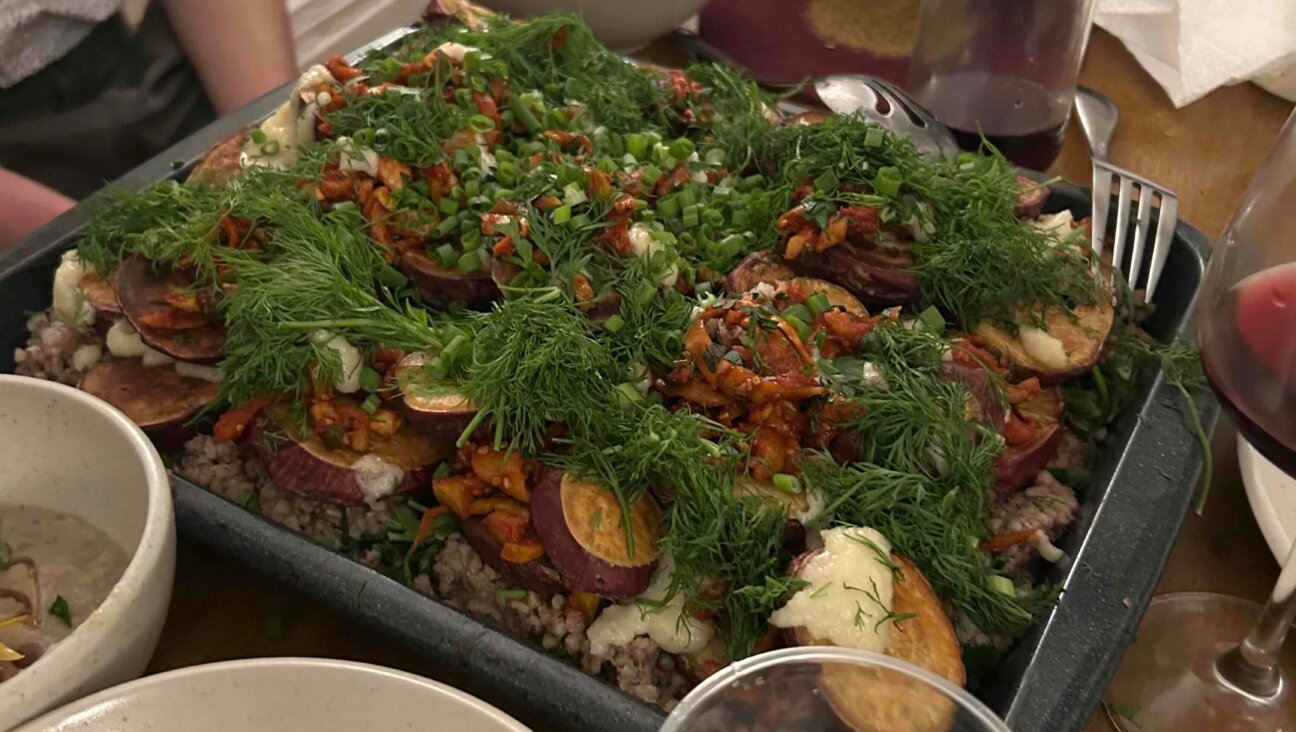Ivan Orkin: How a Nice Jewish Guy Became a Ramen Master

Graphic by Angelie Zaslavsky
Long Island-native Ivan Orkin doesn’t see himself as an American — though he speaks with a New York accent and went to culinary school at the Culinary Institute of America. His life-long love affair with Japan helped him become a ramen star in Tokyo. He’s fluent in Japanese, and since college, he has lived mainly in Japan, with the exception of his years at the CIA and for a few kitchen stints around New York.
In 2007, he channeled his love of ramen into his first restaurant, Ivan Ramen, in Tokyo. Faced with the challenge of being a foreigner opening up a ramen shop in Japan, but armed with a true passion for Japanese culture, his comfort ingredients like rye flour and schmaltz, and years of hard work on his recipes, his shop was an instant success that led to a second Tokyo shop, in 2010.
In 2012, he moved his home base back to New York with the dream of opening up a business back home, while continuing on with his Japan shops. Last year, he opened the Slurp Shop in New York’s Gotham West Market, which features five types of ramen, including a classic shio ramen and a roasted garlic mazemen (a style with less broth), as well as a smoked whitefish rice bowl on the menu. This weekend, his 50-seat flagship shop opens on the Lower East Side with a different menu from his other shops. The space is decked out with a beautiful mosaic mural and it will be serving five types of ramen, including a four-cheese variety and a pork-free variety with his schmaltzy chicken broth base. Small plates and appetizers, such as fried chicken livers and preserved hen and duck eggs will also be available.
We chatted with the ramen master to see what it’s like to return to New York so many years later and why sushi seems to show up at every fancy Jewish function.
How did a foreigner become so successful at owning a ramen restaurant in Japan?
First of all, ramen is very much a maverick cuisine. It doesn’t have any rules and everybody does it differently, so I think that gave me some latitude in having a shop without people judging me too strongly. A lot of times [with ramen] you’re judged on flavor whereas at a sushi bar you watch the guy slice the fish and there are only a few ways to do it, so if you don’t do it that way you’re not taken seriously.
I really love Japan and I don’t really see myself as an American. I speak the language I’ve lived there for a long time, I follow their customs and understand them well. I really love it there and I get a lot of credit for the fact that it’s clear that I love Japan.
Why Japanese food?
I worked in a sushi bar in high school and so when I went to college I majored in Japanese and moved to Japan after graduation. It’s been a life long love affair really.
What’s it been like to open up shop in New York?
New York is a very complex place to open a small business. There are a lot of moving parts, a lot of regulations, and the buildings are really old and with lots of surprises. On the flip side, there are a lot of smart and exciting people that are here and I’ve been fortunate to meet a lot of them. I’m working with a lot of really cool artists [for the shop’s interior] and most of the process has been quite rewarding.
It seems like whenever I go to a fancy kosher event, there’s sushi. Why do you think sushi has become so popular in Jewish American culture, but not ramen or other Japanese foods?
In some ways sushi is the only thing from Japan that’s truly made its way into our culinary culture, and it took 45 years. I think ramen might be the next Japanese thing that truly makes its way deep into the heart of our culture, and Jewish people might really eat it, but right now also the majority of ramen in America is pork based. My ramen shop is not pork based. We do use some pork fat and we serve it with pork but as of next week we’ll be offering a 100% pork-free ramen.
How do your Jewish roots show through in your cooking now?
I use rye flour and schmaltz…these are flavors and things I know and like and that I’m very comfortable with. But people ask, “How does Jewish food come through in your cooking?” and I don’t see cooking that way. I think good chefs tend to have food experiences and every time they eat something or see a new technique, it goes into their experience the same way a painter or carpenter might learn a new technique for building something or painting something in a certain way. Cooking is all about a combination of technique and understanding ingredients and how to use them so that they work well. There’s lots of things about my Jewishness that are in my food but it’s more just the fact that it is who I am. When you’re Jewish it’s part of who you are, and it’s impossible to take it out of yourself.
Photos courtesy of Ivan Ramen.















